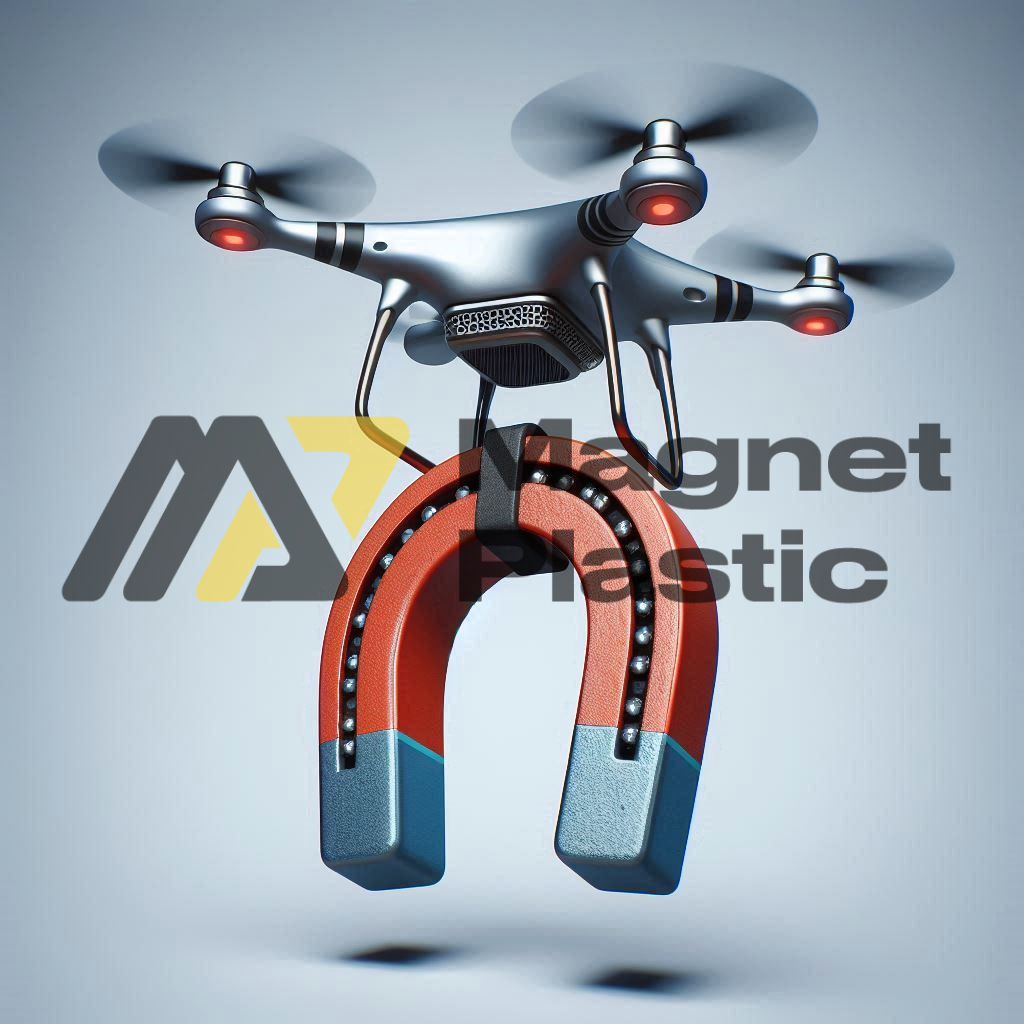Magnets in Drone Technology
In recent years, drone technology has rapidly advanced, revolutionizing industries such as aerial photography, package delivery, agriculture, and surveillance. A crucial element in this progress is the use of magnets. Magnets in drone technology are essential for enhancing stability, efficiency, and functionality. This article explores how magnets are integrated into drones, their benefits, and future innovations they promise.
Applications of Magnets in Drones
Drone Motors
Brushless motors, which are predominant in modern drones, utilize powerful magnets to generate movement. These motors operate through the interaction between permanent magnets and electromagnets, providing consistent and efficient thrust. Magnets in drone technology are crucial for the optimal performance of these motors.
Stabilization and Navigation
Drone stabilization and navigation systems heavily rely on magnets. Magnetic sensors, such as magnetometers, are vital for obtaining precise data on the drone’s orientation. These sensors enable drones to maintain stable positions and navigate accurately, especially in areas with weak or nonexistent GPS signals.
Loading and Docking Systems
In commercial and delivery applications, magnets play a significant role in loading and docking systems. Magnets ensure quick and secure attachment of packages, guaranteeing that the cargo remains stable during flight. Additionally, in autonomous drone operations, magnets facilitate precise docking at charging stations and landing bases.
Benefits of Magnets in Drone Technology
Energy Efficiency
One of the main advantages of magnets in drone motors is energy efficiency. Brushless motors using neodymium magnets are highly efficient, reducing energy consumption and extending battery life. This is essential for maximizing flight time and operational capacity.
Weight Reduction
Modern magnets are extremely powerful yet lightweight, making them ideal for drone construction. Weight reduction is critical in drone design, as it allows for longer flight times and better maneuverability. Magnets contribute to a lighter design without compromising power and performance.
Increased Reliability and Lower Maintenance
Brushless motors with magnets require less maintenance than traditional brushed motors, as they have no moving parts that wear out over time. This increases drone reliability and reduces long-term maintenance costs.
Future Innovations in Magnets and Drones
Modular Drones
Magnets are facilitating the development of modular drones, where components can be easily replaced or upgraded using magnetic coupling systems. This allows users to customize their drones according to specific mission needs, making drones more versatile and adaptable.
Wireless Power Systems
The use of magnets in wireless power transfer systems is gaining popularity. This will enable drones to charge automatically when approaching a charging station, improving the autonomy and operational capacity of drone fleets. Magnets in drone technology are at the forefront of this innovation.
Advanced Magnetic Sensors
Research in advanced magnetic sensors is ongoing, promising greater accuracy and detection capabilities for drone applications. These sensors can further enhance navigation, stabilization, and obstacle avoidance, taking drone technology to new heights.
Conclusion
Magnets in drone technology are essential for efficient and advanced operation. From motors and navigation systems to loading and docking applications, magnets enhance stability, energy efficiency, and reliability. As technology continues to evolve, magnets will play a crucial role in developing more advanced and versatile drones, opening up new possibilities in various industries and applications.
